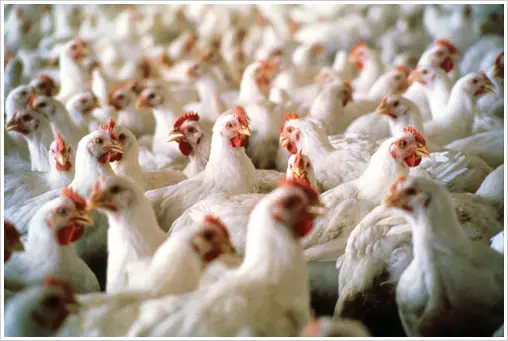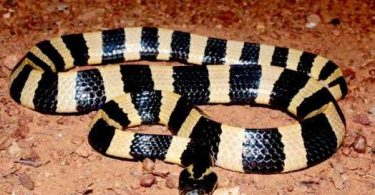Excerpted from: The Poultry Doctor: Including the Homeopathic Treatment and Care of Chickens -Including the Homoeopathic Treatment and Care of Chickens, Turkeys, Geese, Ducks and Singing Birds.
Administration of Remedies
The easiest way of administering the medicine is to dissolve two or three dozen pellets in a clean dish of pure water, and let the fowls drink it at will.
If the disease is of an epidemic nature, like Roup or Cholera (Homeopathy for Cholera), it is well to let them all at it, for, given the correct remedy, it will cure the sick and prevent those still apparently well from developing the disease.
Another method and a good one, in view of the fact that chickens are nearly always ready to eat, is to dissolve the medicine in pure water and mix the water with corn-meal or moist food, and feed it to the flock, or the individual fowl, as the case may be. Another method is to moisten a bit of white bread in the medicated water, by which means a few fowls may be treated without the trouble of separating them from the flock. They can be driven aside and fed.
As a rule, where the ailment is confined to one, or a few, of the fowls, it is better to keep them apart from the others, where they can be treated with more care. The pellets can be given dry also, which is an excellent method, if practicable. Homoeopathic medicines may also be had in liquid form, in which case from five to ten drops in water constitute a dose. Many people prefer them in liquid form.
After two days, if there is no marked improvement, select some other remedy ; the chances are that the indicated one has not been chosen, for the true homoeopathic remedy acts very quickly on fowls and animals — quicker, indeed, than on mankind — as fowls and animals do not injure their constitutions by unnatural living. When there is a marked improvement, discontinue the medicine, and do not resume it unless there are signs of a relapse. Too much medicine has been the bane of man and beast.
Coryza or Catarrh
This is not at all an uncommon complaint, and it causes considerable losses, being also one of the difficulties sometimes classed as Roup. With pigeons it often occurs during moulting, and is contagious, and sometimes plays havoc in the pigeon roost. Pigeons suffering from coryza keep their bills open, and a yellow looking mucus may be seen in the nostrils ; the mouth also looks yellow. If the disease is noticed in time, remove the infected bird, but if a number are affected, it is better to treat the whole lot. Mercurius viv. will generally cure ; a dozen pellets dissolved in clean drinking water, or the water used in mixing soft food. Continue until cured, or if no improvement is noticeable in a few days change the remedy to Acidum sulph., in the same way.

Coryza is particularly dangerous with turkeys. The turkey seems uneasy, trembles, an acrid, slimy discharge comes from the nostrils and the eyes grow dim. If possible, separate the sick turkey from the well ones, and administer to it Acidum sulph. or Mercurius viv. As with pigeons, the disease seems to attack the turkeys during moulting time. H. Fisher, V. S. of Berlin, reports the complete and satisfactory cure of a valuable parrot who was suffering from a bad coryza or catarrh. The bird ate little and breathed with a rasping sound, and was evidently suffering from a bad cold. Dulcamara and Hepar sulph., in alternation twice a day soon removed the trouble. Hepar sulphur is the best remedy when there has been partial relief from other remedies but not complete cure.
Gelsemium is an excellent remedy for catarrh incurred during warm, moist, relaxing weather. Catarrh or coryza in fowls must be distinguished from roup; as a common bad cold is distinguished from croup or diphtheria in human beings. The discharge from the nostrils of fowls in catarrh is thinner and not offensive, and is accompanied with sneezing and coughing, while in roup the discharge is thick and very offensive. Cold, catarrh, coryza, roup and pip are all more or less related to each other.
Cholera
It was frequently observed at the times and places when cholera was epidemic among human beings that chickens, turkeys, geese and farmyard fowls generally, became in many instances similarly affected. At the present day the word “cholera” is applied to an epidemic which while varying somewhat in different parts of the country is always accompanied by a violent diarrhoea, and is very fatal. Some of the characteristics of this disease are : Sad looks, lost appetite, weakness, staggering, thirst, hanging heads; in more advanced stages a tough mucus trickled from the bills, which hang so low as to touch the ground, the comb becomes shrunken and of a bluish color, while the diarrhoea is violent and almost liquid, yellowish or greenish, frothy ; as the end approaches the eyes close. Being an epidemic it is well to treat the entire flock, though if the sick can be isolated so much the better. European writers highly commend Veratrum alb., both as curative and as preventing the spread of the disease. Dissolve anywhere from two dozen pellets to half the vial (according to size of flock) in water given the fowls to drink, or take part of the water and moisten their food with it. Arsenicum is also quite as valuable in cholera; the symptoms of both remedies bear great resemblance, Arsenicum being indicated in the second stage where there is great prostration.
Arsenicum iod. (iodide of arsenic) has by clinical experience proved effective, as the following experience reported by Dr. Robert Boocock in the North American Journal of Homceopathy shows :
Chicken Cholera —
“I can fully endorse the curative power of Iodide of Arsenic in certain forms of humid asthma, having been successful in a few cases. I want to speak of this medicine as a means of curing the summer complaints we often meet during the hot weather. Two years ago I lost almost all my chickens by chicken cholera. Last summer a new lot of hens and chickens began to die off by the same disease, and I thought it a good chance to try Arsenicum iod. 3. I mixed about two pounds of meal with two drachms of the remedy, and left the mixture in the chicken house for them to take at will. It cured every case. I had a good lot of it left to throw away. In severe cases of cholera infantum it promptly cured when all our usual remedies failed.
Parched corn, or parched cracked corn, almost to coffee-color, is an excellent food for flocks during cholera season — not exclusively but as a part of the food.”





I am curious to know what is the best remedy for lice causing feather drop around the vent. I’d thought of Cina as it is a bit like worms but I’d like to hear someone else’s opinion on the subject.
i use plain old ash from the fire (ensure your wood is pure and not contaminated before burning). some people use DE but this product has its dangers. i find ash doesn’t have the respiratory problems as DE which can kill a chook. i would do the whole flock 5 days in a row, then once a week and once a month. if you still see many after the first 5 days of ashing i would keep on with the ashing but usually they will all be gone. because of their life cycle one has to continue the programme. with regards the nude bottom there is a homeopathic remedy for helping feathers return but i can’t think of it for now. however, the poultry doctor book (which if you haven’t got a copy get one – free on the internet), if i remember correctly, uses hep sulph for helping chicks with feathering. so that may help too. but just check that one as i’m not 100%. as a hint, charcoal is my BEST medicine by far (altho the poultry doctor admits this doesn’t work – this is definitely not true as i’ve used i on myself against rabies (i’m still alive!) and regularly for other injuries such as sprained ankle for pain; on my sheep for that foot disease which vets use very toxic drugs and injections (there meds didn’t work so i tried charcoal – that was my 2nd experience and worked 100% within a couple of hours the sheep was up and walking after being off his legs for a week or more). charcoal can be used for inflammation, infection, toxicity and pain/anaesthesia.